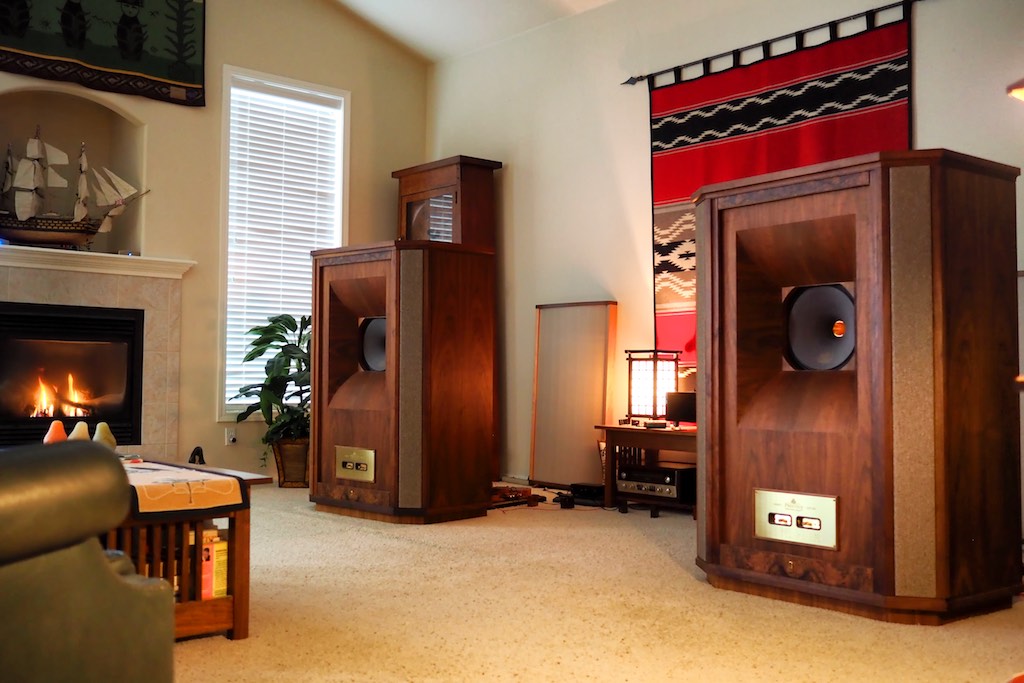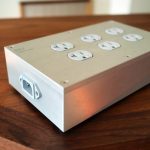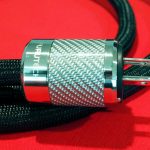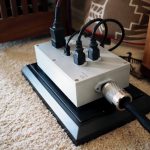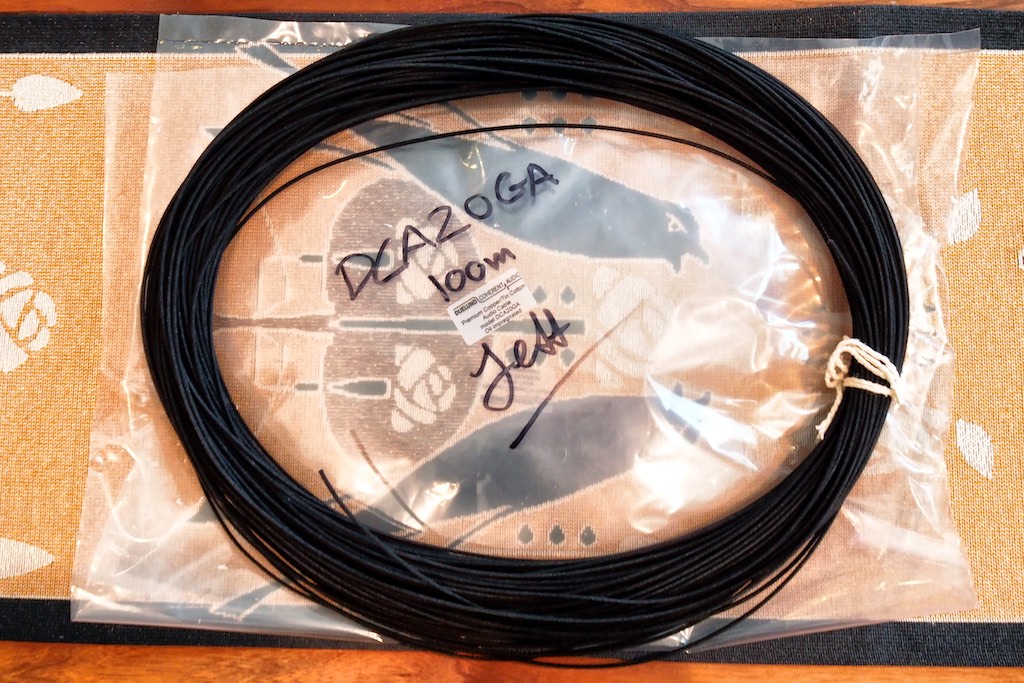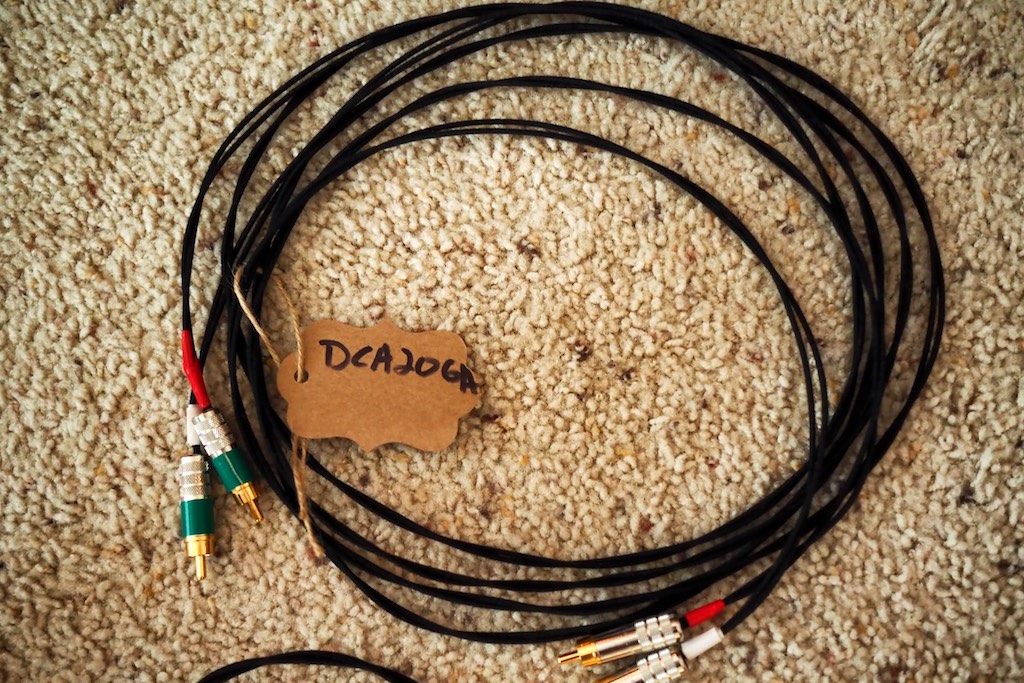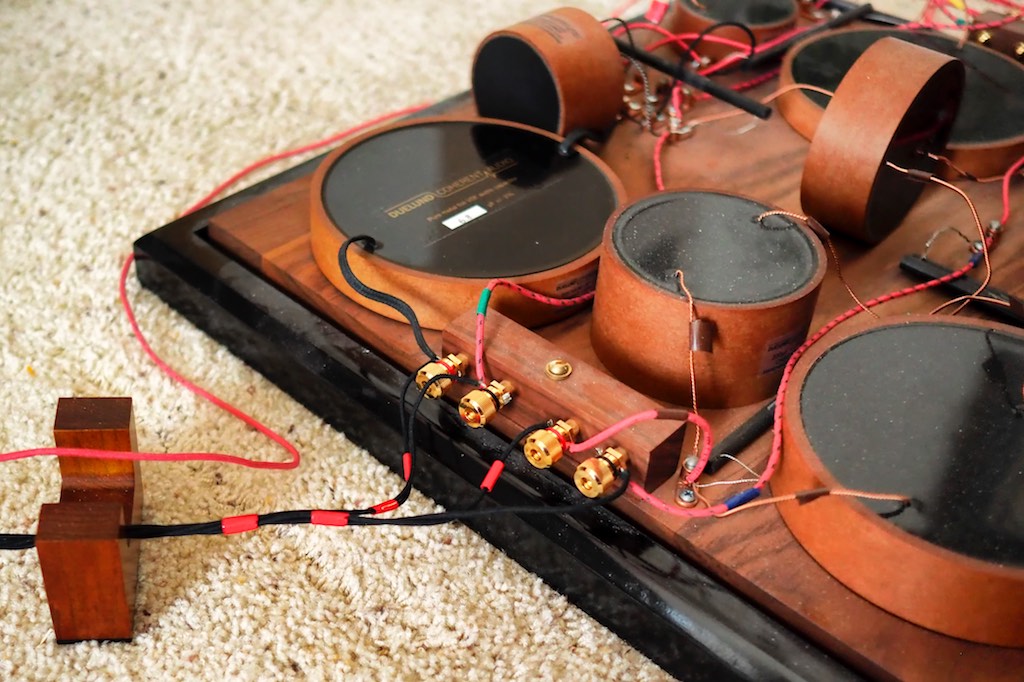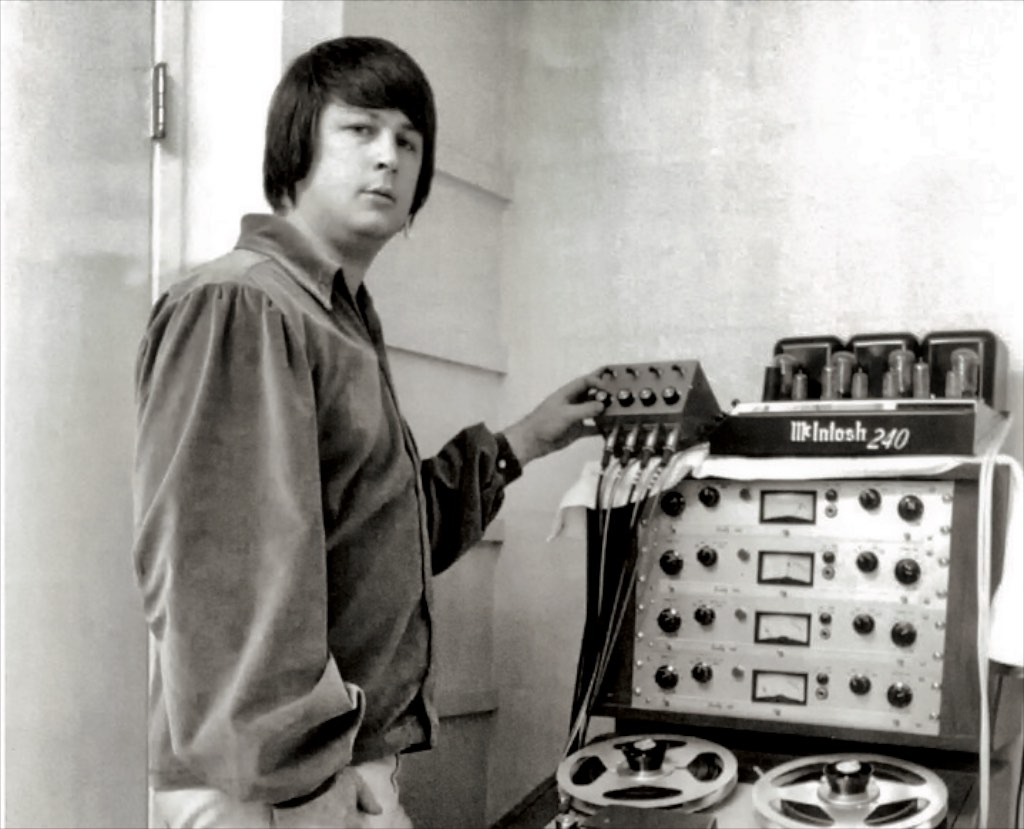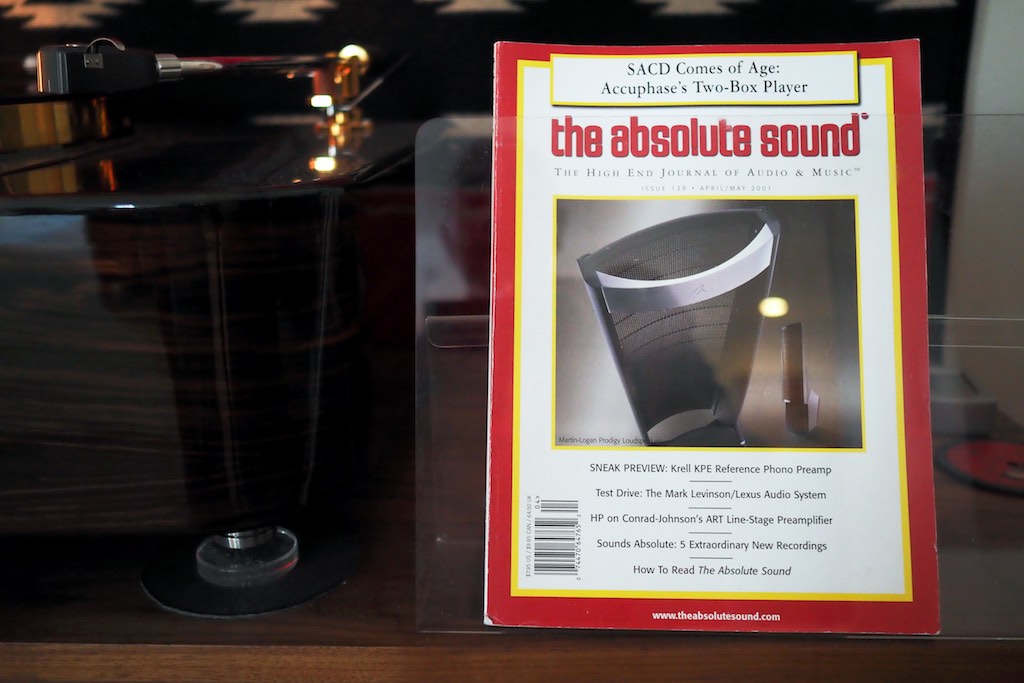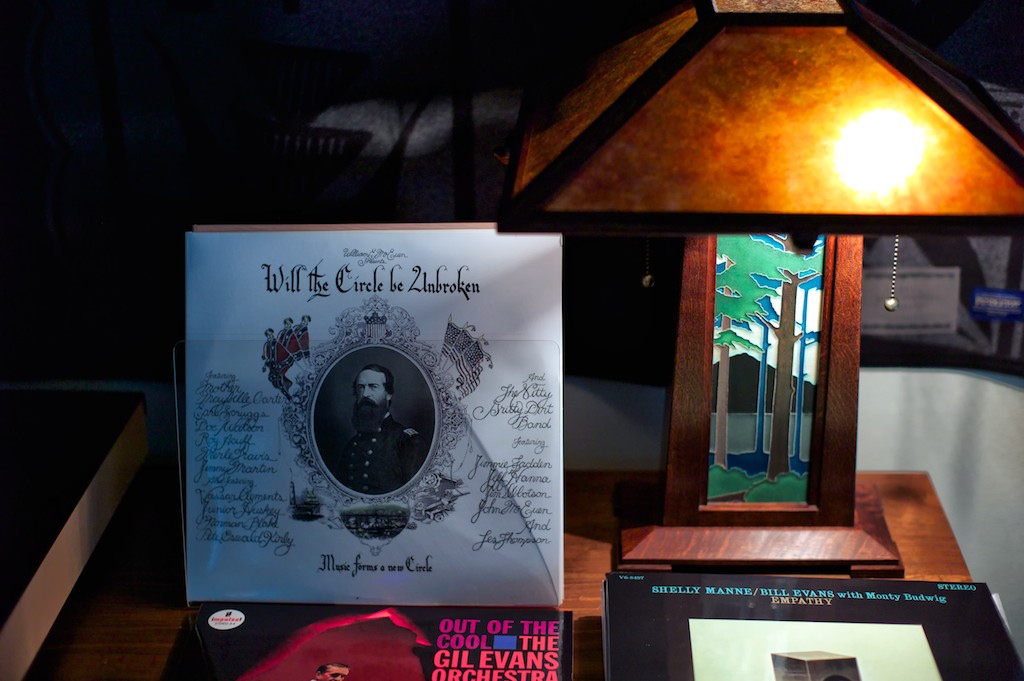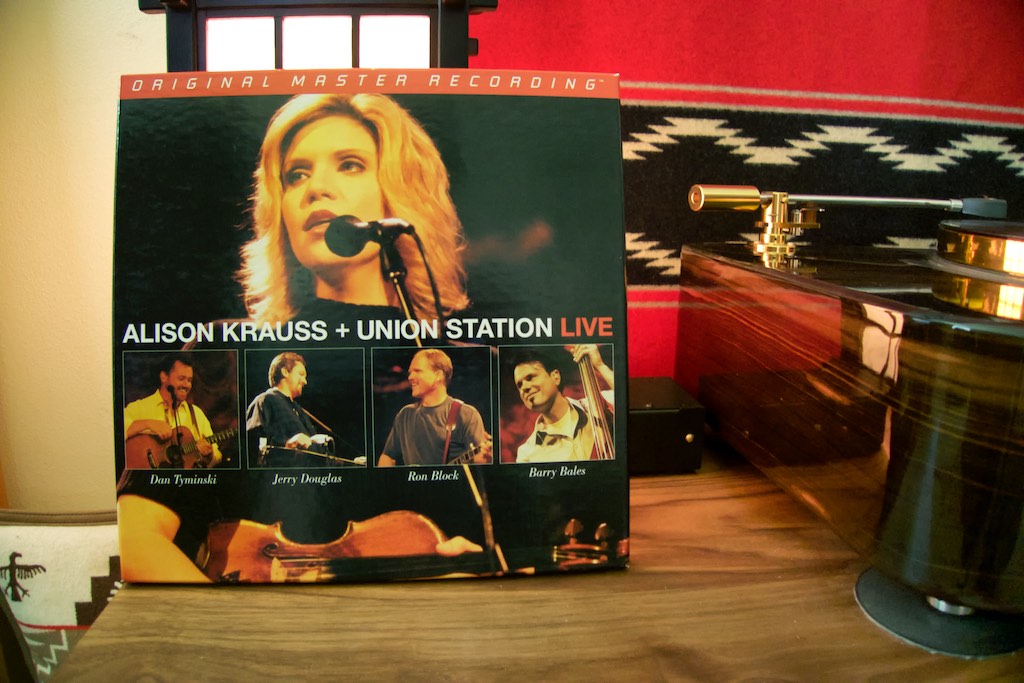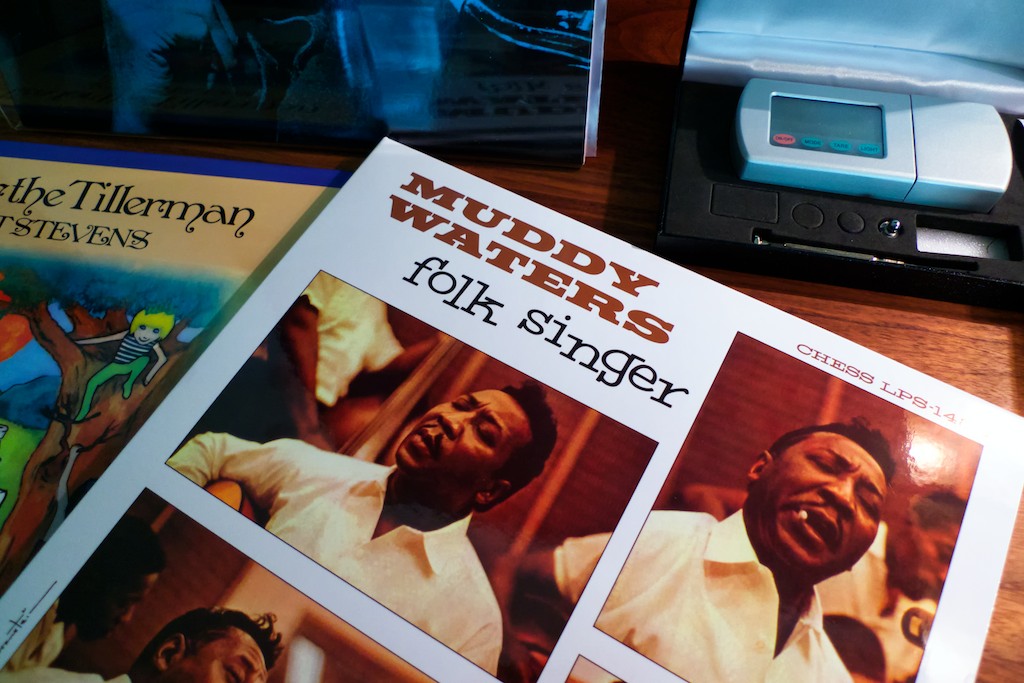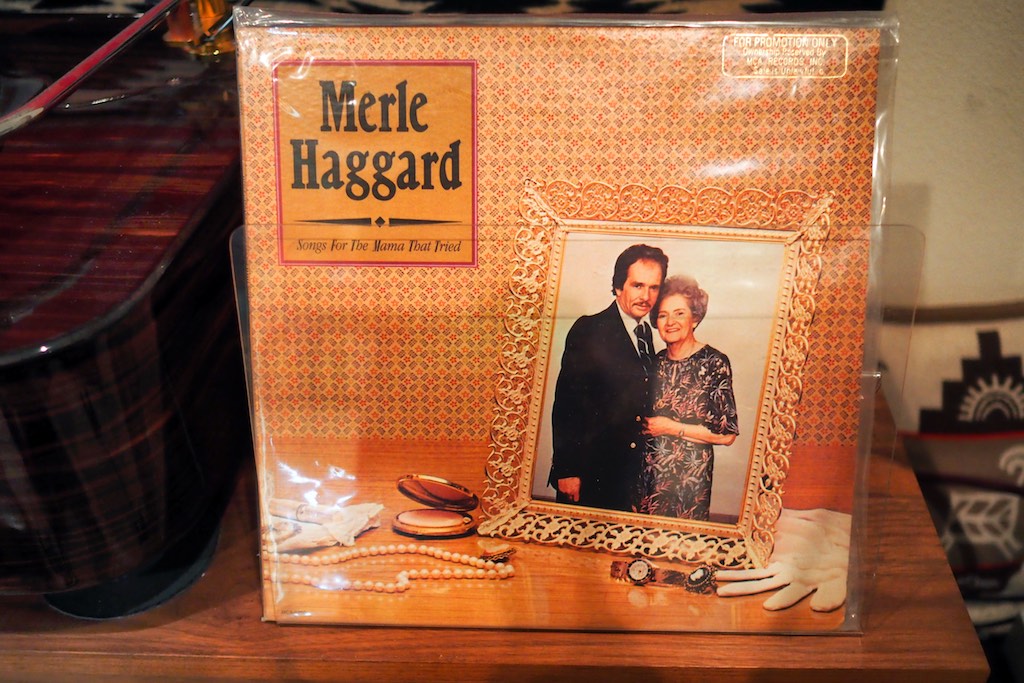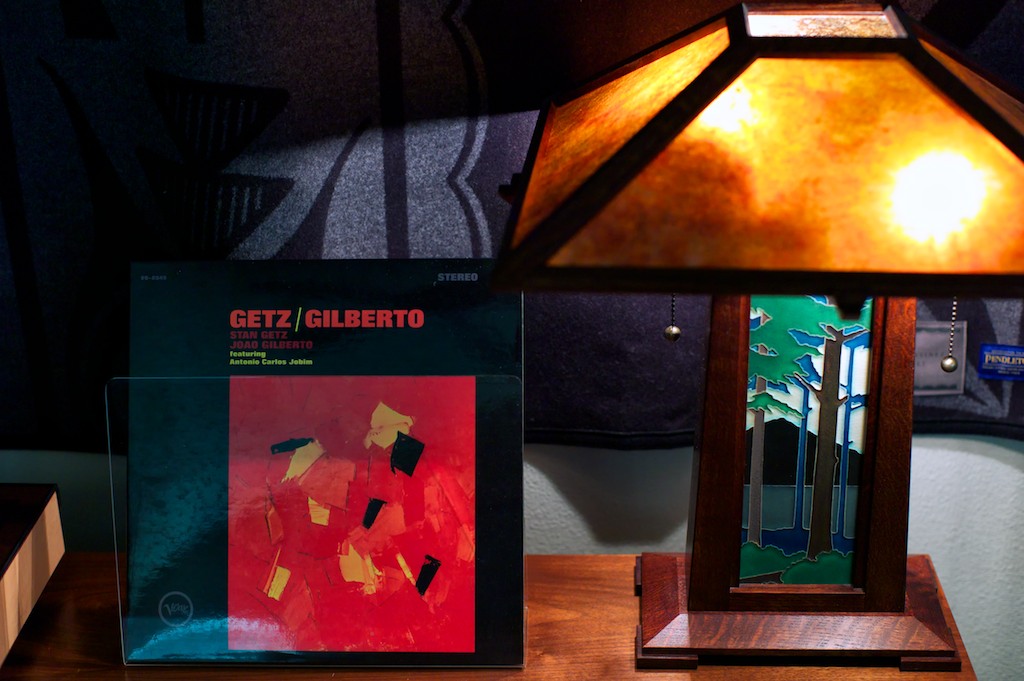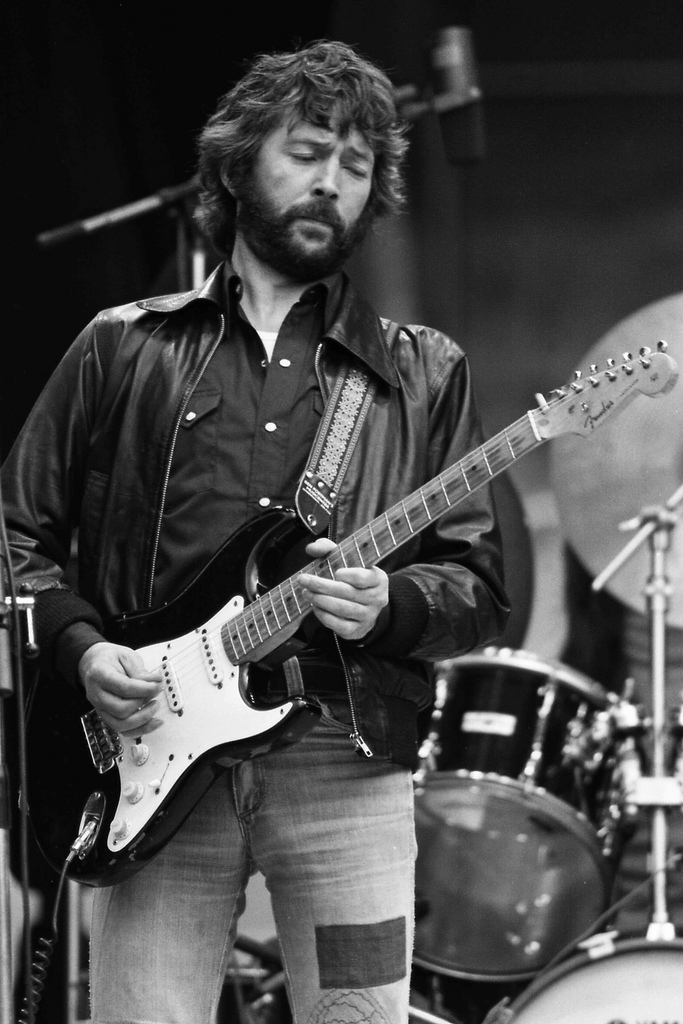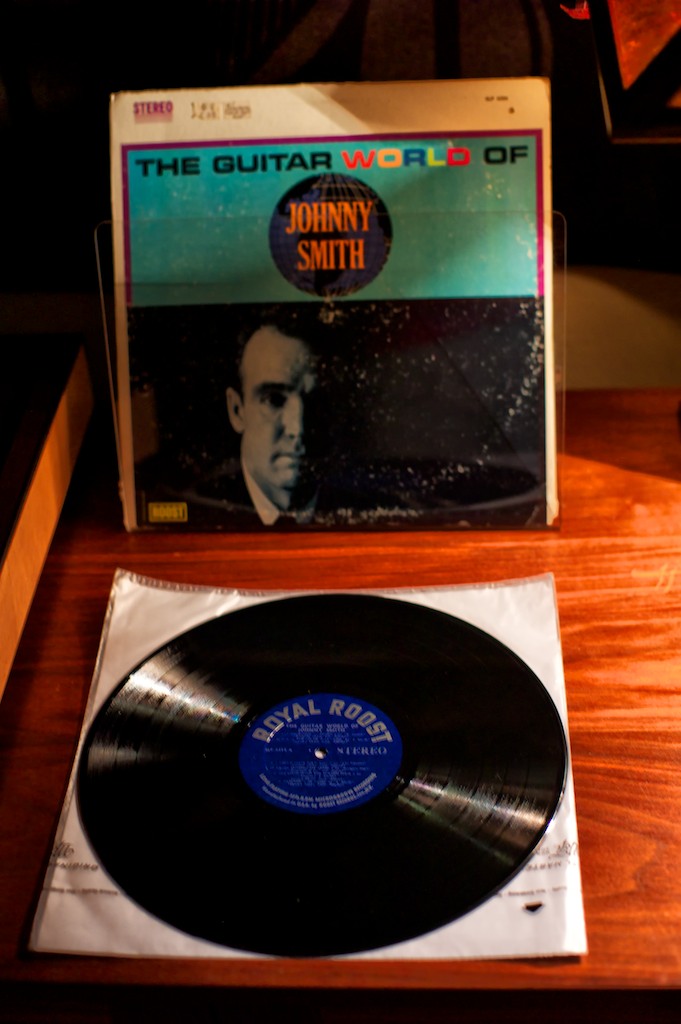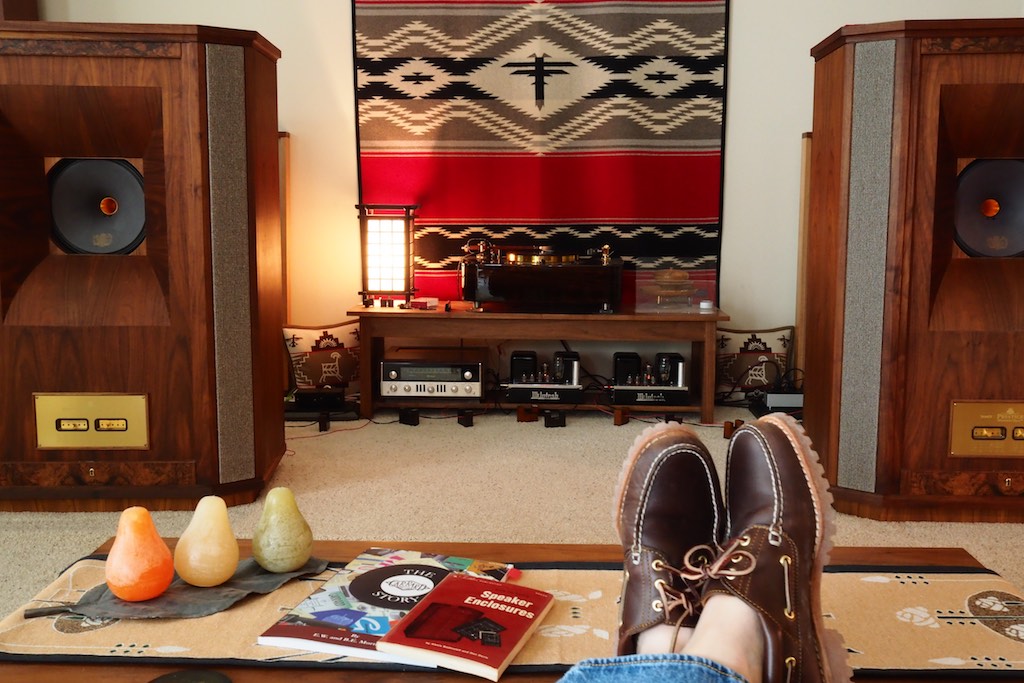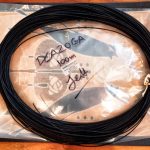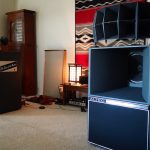There's so many new readers at Jeff's Place these days, that I thought it would be a nice idea to go over the purpose of my Jeff's Place audio blog again, describe where it fits in my spectrum for audio reviewing and reportage, discuss my reviewing methodology, my biases & preferences, and give you a 'master list' of sorts for my audio writing path forward as it stands today.
When I first conceived of Jeff's Place, it was with the intent of providing you a glimpse behind the scenes of the audio review process for my Positive Feedback feature reviews, for whom I serve as a Senior Associate Editor, which is an honorific & non-paid position, but one that I greatly appreciate being bestowed with (Thanks to Dave & David!).
However, over the years Jeff's Place has evolved into much more than I had first imagined, and in addition to providing a glimpse behind the scenes for my Positive Feedback articles, Jeff's Place has become my audio stream of consciousness for telling you about audio & musical discoveries that I find valuable & entertaining, and I think you will too.
On occasion I'll also tell you about interesting ideas that occur to me, and 'other stuff' that doesn't really fit into the 'normal' audio or musical context covered by most audio webzines or audio print magazines.
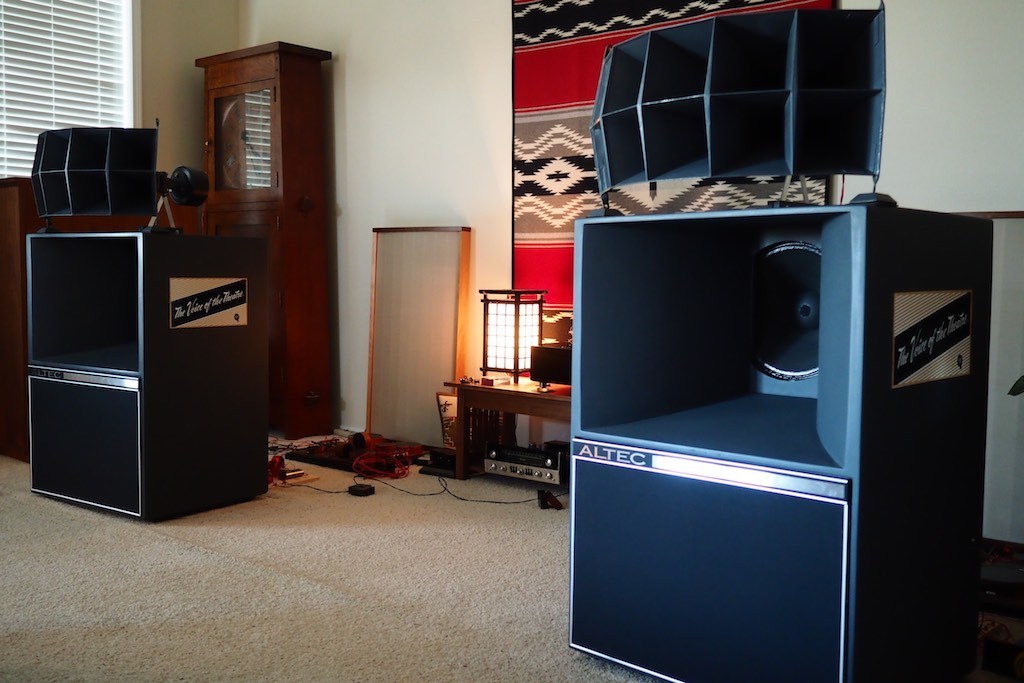
Originating in 1945, the historic Altec 'Voice of the Theatre' loudspeakers gave a life-like 'voice' to many small theaters across America. These professional loudspeakers can be very impressive for home listening today when set up properly for music reproduction in the home, easily outperforming many contemporary loudspeakers.
I really enjoy writing about what I think are important historic, vintage, retro, or nuevo audio-musical discoveries, important insights or emerging trends that are not well known yet, but are developing in a way that seems likely that they may have a bigger & lasting impact on the enthusiast audio landscape at some point.
These are the things you won't be reading about in audio print media for at least a year or two, if ever.

In the beginning was Western Electric, who brought 'the voice' to many movie theaters across North America and elsewhere.
Above is a spool of extinct vintage WE16GA tinned-copper wire on its way to becoming speaker cables for my Westminster & Altec loudspeaker systems, deservedly sparking a wave of world-wide interest in vintage tinned-copper 'tone wire'.
Once largely forgotten, tinned-copper 'tone wires' are back into musicians' and audio's consciousness because of their remarkable combination of musical & sonic performance.

The purist Duelund DCA16GA nuevo tinned-copper wire is a tinned-copper wire done right, going even more 'retro' than the vintage WE16GA by using an oil-soaked & baked cotton dielectric that harkens back to some of the earliest Western Electric (and other) tinned-copper wires.
There is a process I go through when reviewing or writing about audio gear, that spans the time interval from buying or receiving something to write about, my preliminary first impressions of its performance, to my evolving perceptions as I proceed in fully vetting its performance, to an eventual feature article (or not) with my fully articulated long-term impressions about it.
- The Acoustic Revive RPT-6 Absolute NCF power distributor.
- Furutech FI-50M NCF(R) AC plug.
- Power Reference TripleC NCF AC power cord plugged into the RPT-6 Absolute.
When I first buy or receive something to write about (like the Acoustic Revive RPT-6 Absolute & Power Reference TripleC NCF shown above), my first step is usually to do some sort of an introductory blog post about it, with plenty of photos, and a thorough description that gives you a good idea of what it's all about.
Then I begin the rather lengthy process of installing items in for review into my hi-fi(s), doing some preliminary listening to it, making sure it gets fully run-in, that it is maximally optimized for my hi-fi(s) & tastes, and then living & listening with it over time while I try to characterize its performance from a sonic, musical, and emotional perspective, so I can eventually fully vet & articulate its performance and then finally write an article about it in a way that you will find illuminating and entertaining. That's my goal.
The first step of installing a new piece of gear into my hi-fi is can be simple, as with cables, but it's not always that straight forward, as with the historic & vintage monaural McIntosh C-8 ‘Professional Audio Compensators’ (phono preamplifiers), for example, which have a rather involved set of instructions for installation, setup, and adjustment, instructions that are fairly elaborate compared to many of the 'plug & play' audio components of today.
After getting a piece of hi-fi gear installed I usually write up some preliminary listening impressions, like I did for the Duelund DCA20GA tinned-copper tone-wire.
Preliminary listening impressions means just that - preliminary - as the gear under investigation isn't fully run-in, or maximally optimized for my hi-fi(s) & tastes, and I haven't had time to fully characterize its performance from a sonic, musical, and emotional perspective with a broad spectrum of music & associated equipment.
Often upon posting preliminary listening impressions (like with the Duelund DCA20GA, for example), I'll get a stream of detailed questions about the performance of the item being investigated, asking for recommendations about this & that.
I really like to hear from all of you, and your enthusiasm is a blessing and encouragement to me, but at an early point in an evaluation process I can't really answer detailed questions or make recommendations about something's ultimate sonics & musicality because it's too soon in my evaluation process.
It's like when you meet that new girlfriend and she has a nice personality, is pretty, and makes a good first impression. But you don't want to make a decision too quickly about her, and say, propose marriage, because it takes time to find out how solid a person she is, or isn't, as the case may be. Does she have a sense of humor? Is she responsible with her finances? Is she kind, or does she have an abusive mean streak? Does she possess the qualities of honesty & integrity? What's her family like? Do you have compatible interests? You get the idea, it takes time to size up a person to understand what they're about, if they're compatible with you, and in the same way it takes time to size up audio gear too.
So while I love hearing from you (I do!), please be patient with me until I'm further along in the review process, and can tell you with more reliability about what is what. I'm not intending to be rude when I put off your detailed questions, it's just because at the time I can meaningfully say only so much about the gear under investigation, as I don't want to steer you wrong by over-speculating.
Now if you're an audio adventurer, and you want to join me on the cutting edge of these adventures, by all means jump right into the fun, and tell me all about your impressions, and we'll learn together! That's a lot of fun too!
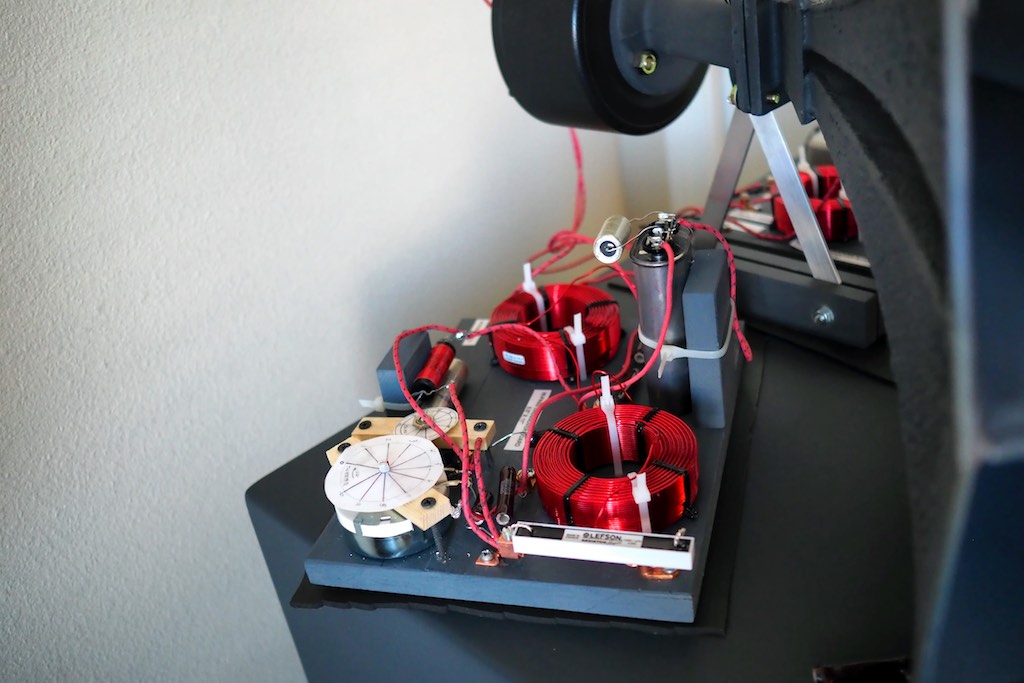
Optimizing crossovers can take quite a while to get them to where they work well with your speakers, in your room, for your tastes. I've been working on my A5's crossovers for over a year!
The reality is it takes quite a while to fully vet & characterize the performance of most audio gear, as performance changes as things run-in, as I figure out the best setup for them, as I listen to them in several system contexts, and I get a handle on what they are doing from a sonic, musical, and emotional standpoint. It just takes a while to figure all that out.
As I begin to understand the sonic, musical, and emotional performance of a piece of audio gear better, I'll like to start filling you in with blog posts on my developing insights, as my level of familiarity & understanding increases.
There really is a surprising amount of information encoded during the recording of a musical performance, with both musical and non-musical information being captured by the microphone(s) during the recording process, that spans sonics, music, and feelings (emotions).
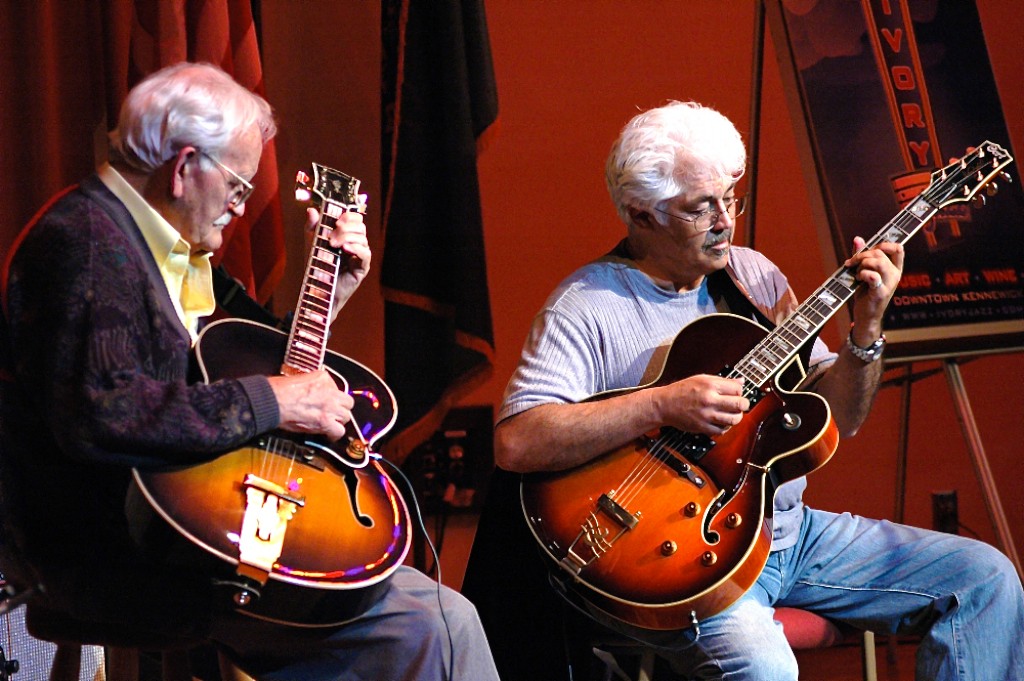
Friends John La Chapelle (left) & Larry Coryell (right) playing jazz. Photo by Dr. Kannan Krishnaswami.
The musical information captured contains those raw elements of what music is composed of, like the timbre of instruments (the unique ‘voices’ of the instruments), the melody (the tune you ‘whistle while you work’), the harmonies (treble & bass accompaniments to the melody), the rhythm (the steady beat that determines the tempo), the tempo (the speed of the music), the beat (a pulsing unit of musical time), and the dynamics (variations in loudness), f0r example.
We are all familiar with timbre, melody, harmonies, rhythm, tempo, dynamics, and beat, from listening to live & recorded music, from playing musical instruments, from dancing, and as part of our cultural development as human beings, even if we might not be familiar with the terminology.
It is useful for audio writers to use the existing terminology of music to articulate the musical performance they are hearing from audio equipment, which helps educate readers & listeners, and helps audio writers focus in on and understand what's really going on with a particular piece of equipment under review from a musical perspective, which will be key to an audio enthusiast's long term satisfaction with a given piece of hi-fi gear.
Some audio reviewers, designers, and hi-fi enthusiasts are also fascinated with hearing & discussing the non-musical information captured during the recording process.
In addition to the existing terminology of music, an audio 'sonic' terminology has evolved to articulate the aspects of non-musical information that can be heard, and it includes visual-aural metaphors like transparency (being able to ‘see’ into the recording), soundstage (the three dimensions of the recorded space in width, height and depth), soundspace (the acoustic ‘space’ of the soundstage), and imaging (the feeling of solidity and localization of instruments & musicians on the soundstage), for example.
Audio 'sonic' terminology was discussed & developed thoroughly by the late Harry Pearson, Editor of the Absolute Sound magazine, particularly in Issue 129, April/May 2001, where Harry discusses "How To Read The Absolute Sound" using his terminology, which is worth seeking out as a handy reference for understanding the sonic aspects of audio performance.
As I start to gather my listening impressions, I like to consider all of these musical & sonic aspects of recorded music so I can get the big picture of what a particular piece of audio gear is about, and how likely I will be to find continued enjoyment from it over the long haul.
I listen to the sonic performance of the gear under investigation, which is a short-hand way of saying that I evaluate its performance prowess on unravelling the non-musical artifacts of the recording process, like transparency, soundstage, soundspace, imaging, and so forth.
These aural-visual aspects of recordings can be exciting to hear for audio hobbyists, and some feel that they help fill in the visual blanks that existed between live music and recorded music, by creating a more intimate sense of the presence of the musicians during the recorded-music listening experience.
These non-musical artifacts in recordings are generally the easiest things for untrained listeners to hear, because they don't require any familiarity with musical theory to be perceived, but they are only a part of what one listens for in order to fully evaluate audio gear performance.
As I continue to gather my listening impressions, I consider the musical performance of the gear under investigation across a wide variety of music, to evaluate it for timbral realism at the band level (the band’s signature ‘sound’) and at the individual instrument level (the unique ‘voices’ of instruments). I listen to see if the musicians & instruments to sound recognizably like themselves in tone & timbral texture, as in "Does a Gibson Advanced Jumbo guitar sound like I know it does?" If a Gibson AJ sounds like a Martin D45 something has gone amiss.
I also try to determine if I'm hearing the full musical palette of tone color chordal variations (not to be confused with timbre in its general sense). For example, can I distinguish the tonal colors chordal variations (those alterations of a three-note triad you get by adding additional pitches, as with the major & minor 6ths, major & minor 7ths, dominant 7ths with flat or sharp fives or nines, major & minor & dominant 9ths, 11th, augmented 11th, 13th, etc.), that give life and meaning to the different styles of music and the emotional connections that go with them?
The ability of a component to distinguish and present realistic tonal color is important because different musical styles are stylistically defined by groupings of tone colors that creates much of the ‘musical feel’ for that particular style of music, which helps musicians craft a certain musical message and emotive feel to go with the music.
Components that blur, homogenize, bleach, or alter tone colors can diminish the artistic intent and emotional content of the music, and ultimately your emotional connection to the music.
For example, let's take simple forms of folk music, where the tone color focus is around the sound of major and minor triads, like some of those from the Will the Circle Be Unbroken album.
As a musician, maybe you will want to add in an emotive feeling of longing for lost love on a particular song, so then you might add in a major 7th color tone, as some Celtic folk tunes do.
Or maybe you are feeling down and out because of your troubles and sorrows due to that cheatin’ mean woman you love, so you want to add in some blue notes (Eb, F#, Bb) to your folk major and minor triads, and voilà, the blues emerge, so now so you can sing your blues along with Muddy Waters’ Folk Singer for a while.
After singing the blues for a while because of that mean woman you love, you decide to add in some suspended 4th tone color as you seek help from a higher power while singing some gospel music.
Now you are feeling better and are ready to give the good life another go, to strut your stuff, so you change your lyrics and move the beat of the music from two & four to one & three, and play some rock & roll along with the Rolling Stones! Yeah baby!
Maybe you are feeling like getting tonally complex and exploring a little jazz with a major 7th, or adding in a flat five for a little bebop, or adding in a softer Latin tone color with a major 9th so you can play The Girl from Ipanema along with Getz/Gilberto.
Well you get the idea, there’s a reason certain styles of music sound the way they do, and an important part of that has to do with tone colors, and there is a major difference between components' abilities as far as ‘tone color resolution’ is concerned, and it turns out that those resolved variations in tone color are very important to experiencing the full emotive impact from the music you’re listening to.
I like to listen to how well the audio gear under investigation plays the melody (the tune you ‘whistle while you work’), the harmonies (treble & bass accompaniments to the melody) and rhythm (the steady beat that determines the tempo).
The ability to convincingly reproduce melody, harmonies, rhythm, beat, and tempo varies quite a bit with different audio gear, and its important because that's what gives a life-like flow and connectedness in how the musicians interact in the music.
I want dynamics (variations in loudness) to evoke that which I hear in life for a greater sense of emotional connection to the melody and rhythm.
I also like to listen to how well something under investigation plays loud. Most gear can play softly and sound decent, but as volumes go up it becomes much more difficult for audio gear to maintain musicality.
For listening, I often like my music playback to be similar to live loudness levels, which for the kind of music I listen to the most, jazz, usually means 80 dB or louder. Does it start to sound harsh, hard, or unpleasant as volumes increase? If it does, it should be noted.
Finally, I want tempo portrayed so that both the mood and speed of the music are conveyed through it, just like it is with music in real life. Some gear makes everything sound energetic and fast, others relaxed and slow, but it is the music itself that should confer these aspects, and if equipment is imprinting on it that's something to be aware of.
On The Guitar World of Johnny Smith the way Smith improvises on the melody is absolutely captivating, and when you listen to it you should get a real feel for his touch upon the strings, and the incredible sense of rhythm (the steady beat that determines the tempo) he infuses his playing with. This album has a lot of different tempos across the songs.
Some equipment delivers higher performance in presenting realistic melody, rhythm, and tempos, and on an album like this it allows the music to come alive in realistic fashion, making for a richly engaging sense of mood and emotion, that really allows the listening experience to bloom, which can go missing with equipment that doesn't get the music right.
At the end of the day, when I come home to listen to music for enjoyment, I want to be swept up in the emotional artistry of the music, so let's talk about emotional involvement for a little bit.
You might ask, “What aspects of reproduced music provides the greatest emotional stimulation?”
As you might expect, the answer is more complex than a mere bullet list of hi-fi musical & sonic elements that maximize emotional stimulation, but there are some aspects of music reproduction that are known to enhance the emotional connection to the music.
For example, instinctive brain mechanisms, like brain stem reflexes, are emotionally aroused by fast tempos, lots of acoustic roughness, and sudden percussive events. This is not something we can control, it is hardwired into our neurobiology, but suggests that home music systems that stimulate brain stem reflexes more easily will emotionally arouse you more than home music systems that don’t.
So, home music systems that are able to more realistically reproduce tempos, acoustic roughness (timbral textures), and sudden percussive events (loudness & dynamics) will be more emotionally stimulating than those that don't have quite the same level of prowess for those musical elements.
A home music system that can’t play realistically loud at a live-like volume levels, realistically produce timbral textures of instruments & voices, or communicate musical tempos realistically, will not be able to stimulate you emotionally as much as one that can.
There is another instinctive brain mechanism called rhythmic entrainment, and it refers to the way our bodies rhythmically respond to the beat in music, as evidenced by tapping a foot to music, or being stimulated to clap or dance.
Responding to beat is something that is hardwired into our neurobiology, our brains perceive beat as pleasurable, and home music systems that more realistically portray beat will engage us more than home music systems that don’t.
The third instinctive brain mechanism is called emotional contagion, and describes how when we mirror the emotions expressed in music we start to feel the same emotion.
There are similarities between speech & music that convey emotion, and those similarities evoke an emotional response when in music.
For example, 'happy speech' tends to be relatively fast, with medium to high loudness, has a high average pitch, brighter sound quality, and crisp articulation; and emphasizes upward pitch movements. 'Sad speech' is slower, quieter, with lower average pitch and a narrower pitch range, has a darker sound quality, with duller articulation, and emphasizes downward pitch movements.
So music that is fast with medium to high loudness, has a high average pitch and wide pitch range, a brighter sound quality, and crisp articulation, with an emphasis on upward pitch movements, will be perceived as sounding ‘happy’ by the listener.
Conversely, music that is slow, quieter, and lower in pitch, with a narrow pitch range, has a darker sound quality, duller articulation, and emphasizing downward pitch movements, will be perceived as ‘sad’ by the listener.
This suggests to me that a home music system that can play loud when needed, is dynamically realistic, can realistically portray timbral textures, tempo, and beat, will be more emotionally engaging and musically satisfying by conveying more of the artists' intent for the music, than a home music system that can’t do those things as well.
Hi-fi gear that is more adept at playing at varying volumes, tempos, pitches, overtones, variations in tone color, articulation of subtle cues, and gradations in dynamics, all in combination, is more likely to produce a stronger emotional response, and be more satisfying in the long term.
A home music system that can more successfully tie all those attributes together will be more musically satisfying than one that can’t.
So those are the various musical, sonic, and emotional elements I am trying to think about and characterize in audio equipment performance as I progress with my listening evaluations.
Once I feel I have adequately characterized the performance of whatever is under investigation from a sonic, musical, and emotional perspective, that I have fully vetted & articulated its performance, then I am finally ready to write an article about it in a way that I hope you will find both illuminating and entertaining.
It takes a while to do that, but that's my general process for reviewing audio gear over the long term, and I think it is worth it to get that level of understanding, but I promise to keep you informed in blog posts about my perceptions as I proceed towards those goals, because that is a lot of fun too!
Ok, that's it for introducing my reviewing process to you, now let's talk about what's coming up in the review queue!
My upcoming reviews for Positive Feedback:
- The Duelund DCA series of tinned-copper cables: DCA12GA, DCA16GA, and DCA20GA.
- Lefson Analog Devices: The Lefson Resistor!
- The Acoustic Revive Chronicles: RPT-6 Absolute, Power Reference TripleC NCF power cord, and RAS-14-TripleC.
- The Vintage Altec Voice of the Theatre Experience: The Altec-Lansing A5 Voice of the Theatre Project!
- The Murasakino Musique Analogue Sumile MC phonograph cartridge.
- Duelund Coherent Audio DCA20GA tinned-copper tone-wire.
- Lefson Resistor family photo: Premium (top), Supra (middle), and Ultra (bottom).
- Acoustic Revive Power Reference TripleC NCF AC power cord.
- The Acoustic Revive RPT-6 Absolute NCF power distributor.
- Vintage Altec A5 Voice of the Theatre loudspeakers.
- The Sumile phonograph cartridge (more to come soon on this).
What's coming up at Jeff's Place:
- Continued discussion of the Duelund DCA12GA, DCA16GA, and DCA20GA, tinned copper cables as speaker cables, interconnects, internal speaker wiring, crossover wiring, tonearm wiring, etc., leading up to the Positive Feedback feature article.
- Continued discussion of the prototype Duelund CAST tinned-copper capacitors. (Note: because they are prototypes they will not be featured in a Positive Feedback feature article. If I have the opportunity to write about the production versions of the Duelund CAST tinned-copper capacitors, then that will appear in Positive Feedback as a feature article.)
- Continued discussion of the Belden 8402 microphone cable as interconnects and different connection methods.
- Continued discussion of the Lefson Premium, Supra, and Ultra resistors leading up to the Positive Feedback feature article.
- Discussion of the Acoustic Revive RPT-6 Absolute, Power Reference TripleC NCF power cord, and RAS-14-TripleC, leading up to the feature review at Positive Feedback.
- Introduction & discussion of the Murasakino Musique Analogue Sumile MC phonograph cartridge prior to the feature article for Positive Feedback.
- Continued discussion of the development of the crossovers for the Altec A5 Voice of the Theatre Project.
- Crossover project for the Stokowski A7 Voice of the Theatre loudspeakers.
- The vintage McIntosh C-8 phono preamplifier project - bringing the C-8's to life!
- Anything else that comes my way to tell you about!
I hope you enjoy my writing here at Jeff's Place, and I want to thank you for stopping by, and may the tone be with you!




